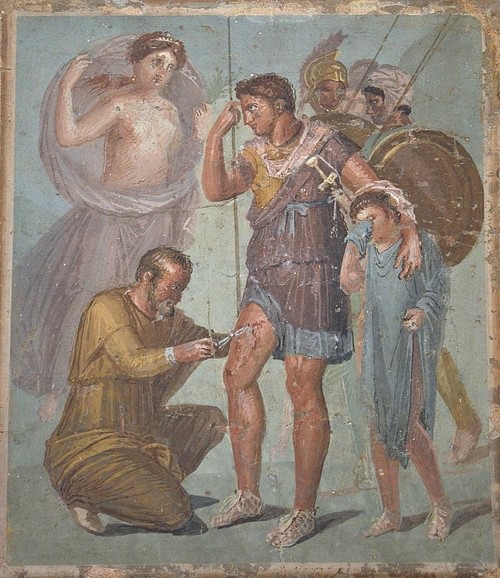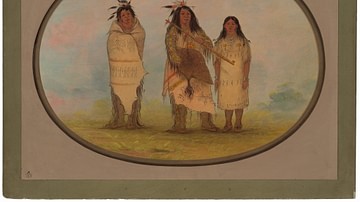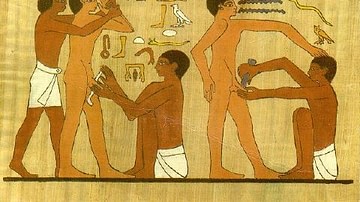Physicians in ancient Rome manufactured a wide variety of pharmaceuticals used to treat health concerns. Roman medicine was highly sophisticated, and Roman medical literature describes early antiseptics, narcotics, and anti-inflammatory medicines. While some ingredients used by the Romans have been proven to be effective, many ancient Roman medicines had no effect or were toxic, especially when taken in imprecise dosage.
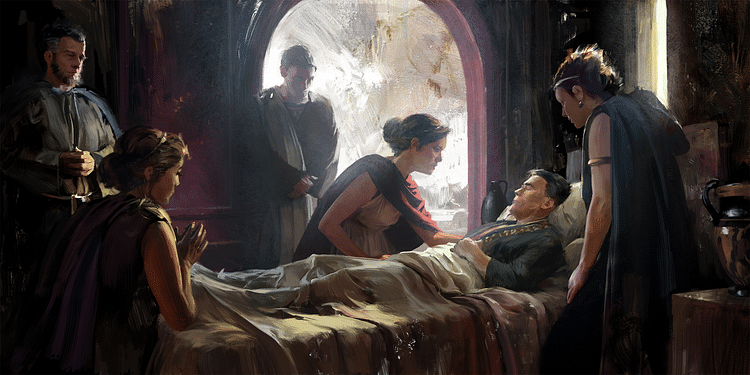
Etymology & Definition
The term "pharmacy" is derived from the Greek word "pharmakon", which described objects and substances that could affect bodily health. The overlapping categories of poisons, potions, and medicines were all considered pharmaka. Greek medicine heavily influenced Roman medicine, which would later absorb medical ideas from other neighboring cultures like Egypt, Pontus, and Gaul. In ancient Latin, pharmaceutical substances and preparations were called "materia medica", which literally translates to "medical substances".
The related word pharmakos in many ways underlines the ambiguous mixture of the rational and magical in the semantic range of pharmak‐. It refers to a scapegoat: human or animal, symbolically imbued with the miasma ("pollution") of a community, and then driven off to remove whatever taint was causing the community's misfortune.
(Jones-Lewis, 403)
These terms were widely used to describe medicinal substances and preparations, and have influenced the medical vocabulary of many modern languages. The ancient meaning of pharmaka also encompassed magical items like amulets and talismans, which were a part of the folkloric medicine practiced in the ancient Mediterranean. Some mundane ingredients could be considered pharmaka when used to promote health, such as wine and oil.
Making & Administering Pharmaceuticals
Plant, animal, and mineral ingredients were ground and mixed using basic tools like mortar and pestle. They could then be combined into an almost infinite array of ointments, lozenges, pills, and suppositories. Medicinal draughts and teas could be drunk or sopped up with pieces of bread. Washes and rinses were often used to treat wounds and afflictions of the ears or eyes. Another common method of administering medicine involved burning ingredients and fumigating bodily orifices with the smoke.
The four standard ingredients of ancient Roman pharmaceuticals were oil, vinegar, wine, and honey. Each of these ingredients was thought to have its own medicinal qualities, and most medications were based on at least one of them. Oil, including vegetable oils and animal fats, cleaned and hydrated skin. Wine was primarily useful for masking the taste of unpleasant ingredients and relaxing patients. Honey and vinegar would have helped to prevent infection by killing bacteria, although the Romans were not aware of this. Vinegar has antiseptic properties owing to its acidity, while honey has antimicrobial properties.
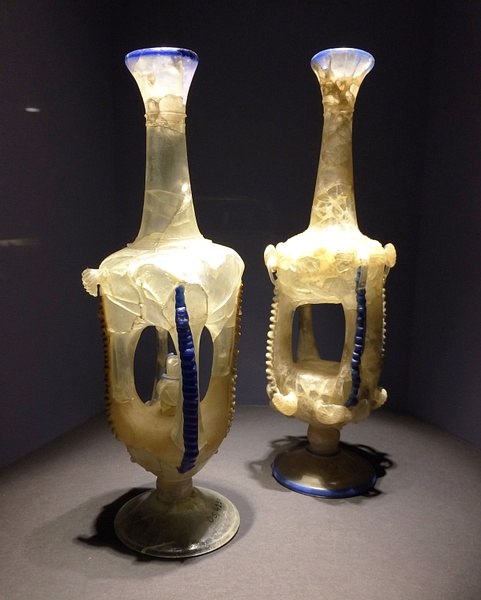
The other ingredients of Roman medications included a spectrum of beneficial, neutral, and actively harmful substances. Plants and their derivatives were the most widely used class of ingredients. Ash and metals, especially lead and copper oxides, were also commonly employed. Roman medications also sometimes included blood, excrement, urine, insects, and animal parts. Blistering beetles, which contain the potentially fatal chemical cantharidin, were applied to chemically burn off warts and consumed to induce erections.
Many premade medications were dried and formed into cakes, which a physician could then break up to apply. Small pots and palettes were also used to store medicines and cosmetics. Archaeologists often use spectroscopic and DNA analysis to study the residue of substances left in these containers to understand what went into ancient medications. However, it is not always clear whether a substance was intended as a medicine, a cosmetic, or a food additive.
Medical Botany
Ancient pharmaceutical manufacturing required detailed knowledge of plant life. The science of botany – the identification, cultivation and use of plants – was thousands of years old by the Roman period, but like other areas of Roman science, it was imprecise. Ancient authors might refer to the same plant under many different names, and botanical terminology changed over time. Works like the De Materia Medica of Dioscorides (c. 50-70 CE) and Naturalis Historia (77-79 CE) of Pliny the Elder helped to catalog plants and their medicinal uses, organizing them by their traits. Physicians like Galen (129-216 CE) and Celsus (c. 25 BCE to c. 50 CE) also described the medicinal applications of plants.
Even though they might have recommended specific plants, minerals, and animals in their recipes, we cannot be certain if doctors or pharmacists in the Greco-Roman world followed their advice unless we examine archaeological remains, which can be found in soil samples from roman house gardens, the residues left in pottery, and the rare examples of surviving medicines in the archaeological record.
(Baker, 154)
The sale of both medicinal ingredients and prepared pharmaceuticals was a massive industry in antiquity, involving a complex network of merchants and producers. Increased trade during the imperial period meant that Romans had greater access to previously exotic ingredients. Indian black pepper, Ethiopian cumin, and Arabian cinnamon, frankincense, and myrrh were exported around the Roman Empire for medicinal and culinary use. Transporting these ingredients over vast distances remained expensive, and many medicinals were perishable, so most people still resorted to local substitutes.
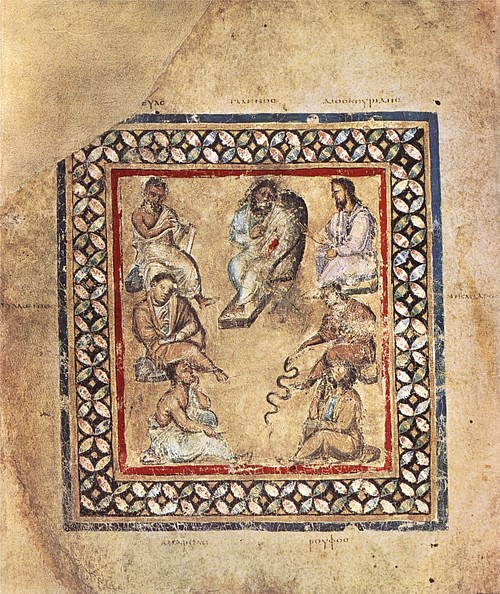
Wound Care
The development of Roman medicine was shaped by Roman warfare, resulting in the creation of a sophisticated arsenal of treatments for combat wounds. Vinegar and other caustic substances used to clean wounds in antiquity were moderately useful antiseptics. Common ingredients like red ochre and pine resin also have strong antiseptic properties.
While the treatment of septic conditions was a principal concern, other medications were intended to stop bleeding, draw poison out of wounds, and reduce inflammation. Oak gall and spider web were used to slow hemorrhaging, while asphalt, gum, and egg white were used to promote wound closing. Excessive wound inflammation was thought to cause further health complications like gangrene, so it was managed by anti-inflammatory poultices and medicated bandages.
In Greco-Roman medicine, pus was thought to be a natural part of the healing process, and specific medications were applied to promote pus production. These included substances like boiled wool, pork fat, and pitch fat. The deliberate culturing of beneficial pus-producing bacteria may have had the effect of preventing worse bacteria from festering the wound. Fevering around wounds, a symptom of infection, was also not a principal concern of ancient physicians and was not directly treated.
Narcotics & Anesthetics
Narcotic medicines were widely used in antiquity to treat chronic pain and insomnia. Many of these pharmaceuticals, which had the potential to induce comas or cause death if improperly administered, were also recognized as poisons. Plants containing toxic alkaloids were frequently in the manufacture of narcotic medicines. Mandrake was known as a powerful narcotic with the ability to induce a death-like state. Other alkaloidal plants like hemlock, wolfsbane, henbane and hellebore were known to have similar effects when taken in large doses.
Different varieties of poppy, with unique medicinal applications, were cultivated in the ancient world. Poppy flowers were cultivated so that their juice could be extracted and used in the production of medicinal draughts or ointments. Papaver rhoeas, known as the "corn poppy" because it was grown in wheat fields, was one of the most commonly cultivated varieties in the Roman Empire. Although it is less potent than many other poppy varieties, it was used to manufacture rhoeadine, a medicine used by Roman physicians to treat sleeplessness and other ailments.
Anesthetic medicines were rarely administered for pain caused by wounds, and ancient literature related to surgery describes methods of physically restraining patients rather than sedating them. Although ancient literature discusses alcohol addiction at length, narcotics addiction did not exist in ancient Roman society. This is partly because narcotics were not available, reliably potent, or inexpensive enough to create widespread addiction. The emperor Marcus Aurelius (r. 161-180 CE), who regularly consumed opium as part of his medical regimen, is an outlier.
Because of their medicinal properties, many of these ingredients were associated with love potions and magic in Roman culture. Hypnos and Thanatos, the twin personifications of Sleep and Death respectively, were frequently depicted with poppies. Hecate, a goddess associated with witchcraft, was also linked to poppy imagery.
Effectiveness
Modern historians consider the effectiveness of ancient medicine to be mixed. The underlying causes of illness were poorly understood in antiquity, and medicinal ingredients were often selected based on their symbolic associations with properties like heat, coldness, dryness, or moisture. Medical pioneers like Galen championed more evidence-based approaches to medicine developed through empirical observation, but they lacked much of the information that modern medical practitioners have.
Unlike surgery, which works on the physical and observable body, medicine operates in a way invisible to the ancient eye. The ancients knew that certain substances had invisible powers, and such a thing is difficult to completely rationalize. Even Galen, arguably the most rationalizing of the Greek medical authors, relied on reasoning with magical elements when faced with the puzzle of why drugs work.
(Jones-Lewis, 404)
Some ancient Roman pharmaceutical treatments may have been clinically effective. Modern studies have demonstrated the effectiveness of many ancient medicinal ingredients. However, the majority of ancient "cures" have no medical basis. Superstition, folklore, and the placebo effect strengthened belief in their effectiveness despite a lack of evidence. Many endemic conditions like parasitic infection were effectively untreatable before modern medicine.
While some ancient Roman medicines may have had beneficial active ingredients, there was no quality control regulating their effectiveness. No ancient society had codified medical standards restricting the creation and distribution of medicines. The relatively primitive methods of processing ingredients meant that different batches of medicine could have dangerous variations in potency. There was also no way for patients or physicians to be sure that medicinal ingredients had not been mixed with cheaper substitutes by dishonest merchants.

